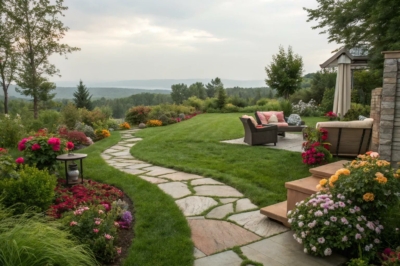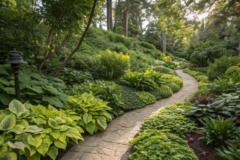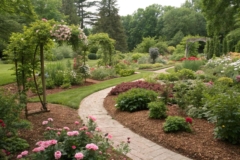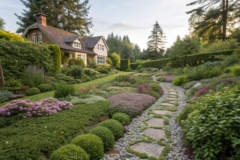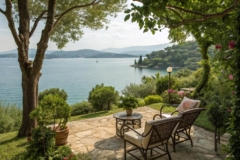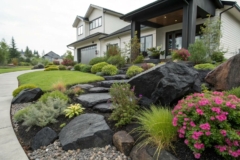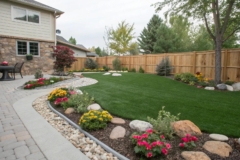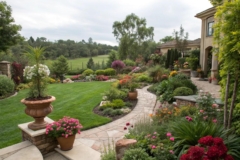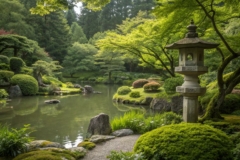1. Pebble Zen Garden
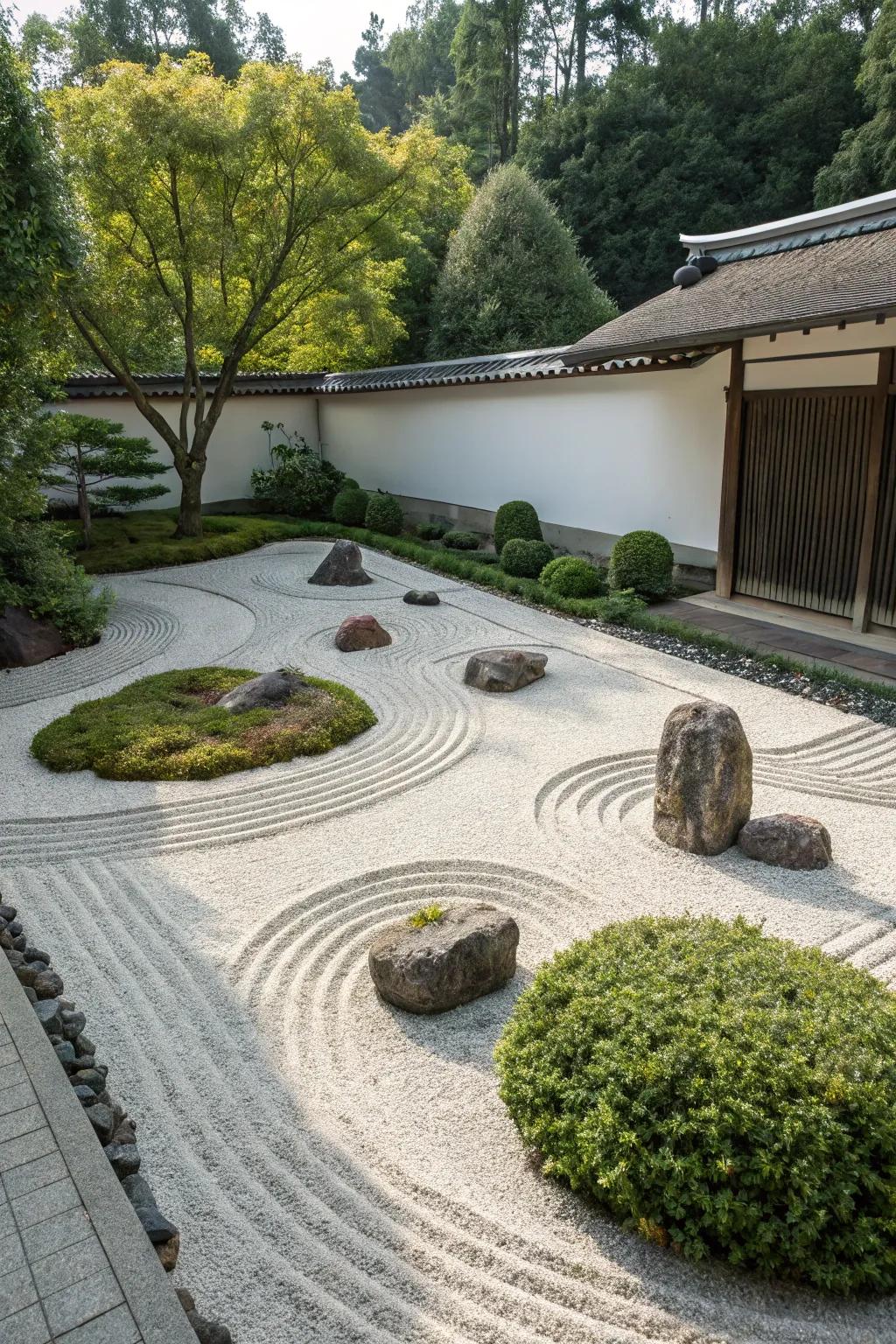
Create a zen garden using pebbles for a tranquil retreat. I love raking patterns into the pebbles – it’s incredibly calming and adds a unique visual element.
Explore these options:
- Zen Garden Sand Rake Set: Enhance your garden with precision raking tools for beautiful, calming patterns.
- White Decorative Pebbles: Create a clean, serene base for your zen garden with these smooth white pebbles.
- Outdoor Bonsai Tree: Add a touch of greenery with a bonsai tree for a natural zen appeal.
2. Mulch and Stone Contrast
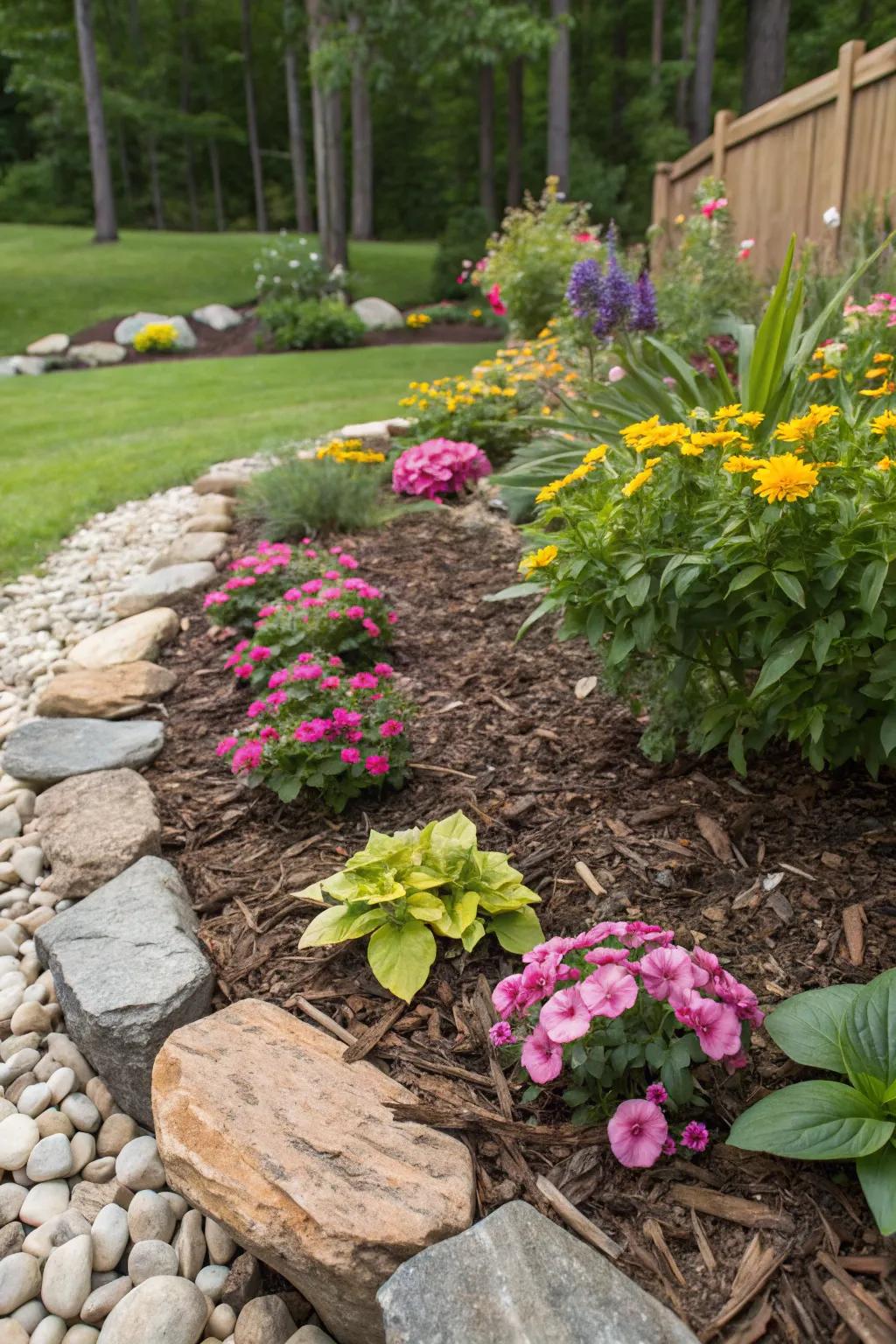
Combine mulch and decorative stones for a striking contrast. It’s a simple way to add depth and interest to your landscape design.
Useful items to consider:
- Decorative River Rocks: Enhance your garden’s appeal with decorative river rocks for a natural, stylish look.
- Natural Cedar Mulch: Revitalize your garden with natural cedar mulch, offering a rich, protective layer.
- Garden Edging Stones: Define your landscape with stylish edging stones, creating a clean, polished boundary.
3. Chic Gravel Paths
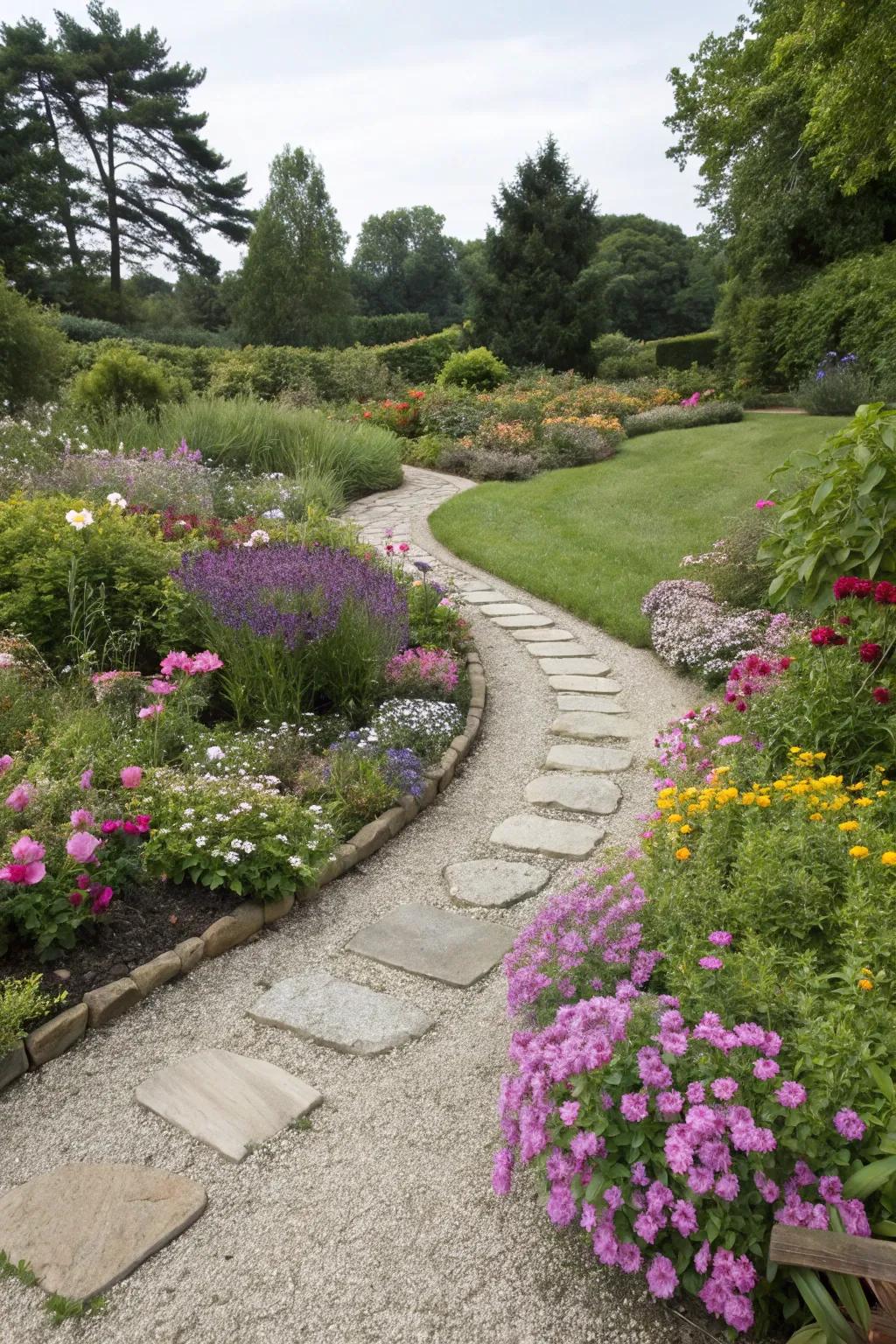
Create a chic and low-maintenance look with gravel paths that guide visitors through your garden. I’ve used pea gravel for its soft texture, and it pairs perfectly with stepping stones for added charm.
You might give these a try:
- Pea Gravel: Enhance your garden with pea gravel for a soft, stylish path that’s easy to maintain.
- Garden Stepping Stones: Add charm to your path with elegant stepping stones that complement any garden style effortlessly.
- Weed Barrier Fabric: Keep your gravel path pristine with durable weed barrier fabric for long-lasting beauty.
4. Playful Clover Patches
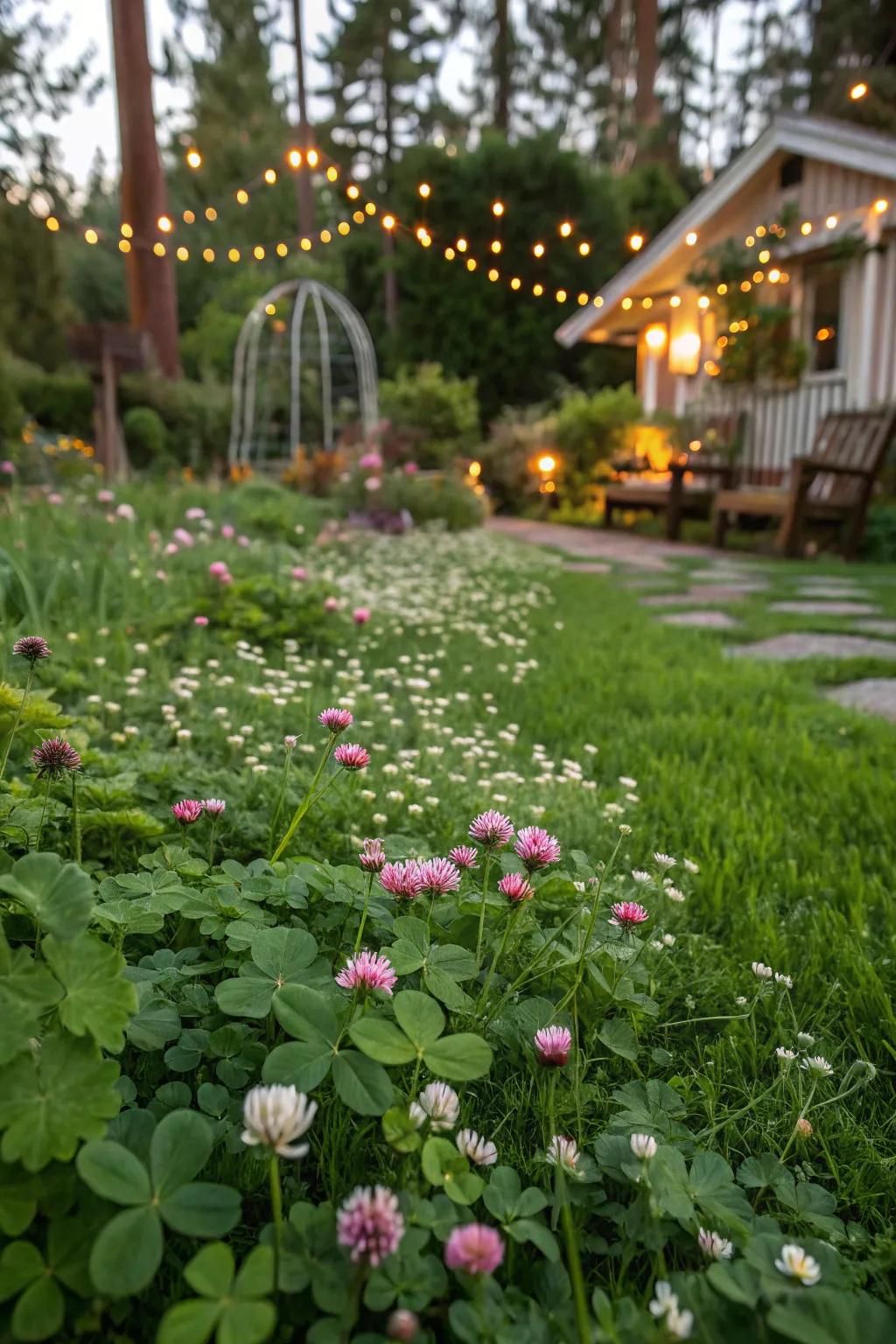
Sprinkle your garden with clover patches for whimsy and charm. They’re not just cute – they enrich the soil and attract pollinators too!
A few suggestions:
- Clover Seed Mix: Transform your garden with lush clover patches to enrich soil and attract charming pollinators.
- Garden Soil Enhancer: Boost your clover growth with this organic soil enhancer, ensuring vibrant and healthy patches.
- Pollinator Habitat Kits: Welcome pollinators to your clover patches with these easy-to-install habitat kits.
5. Bark Mulch Beds
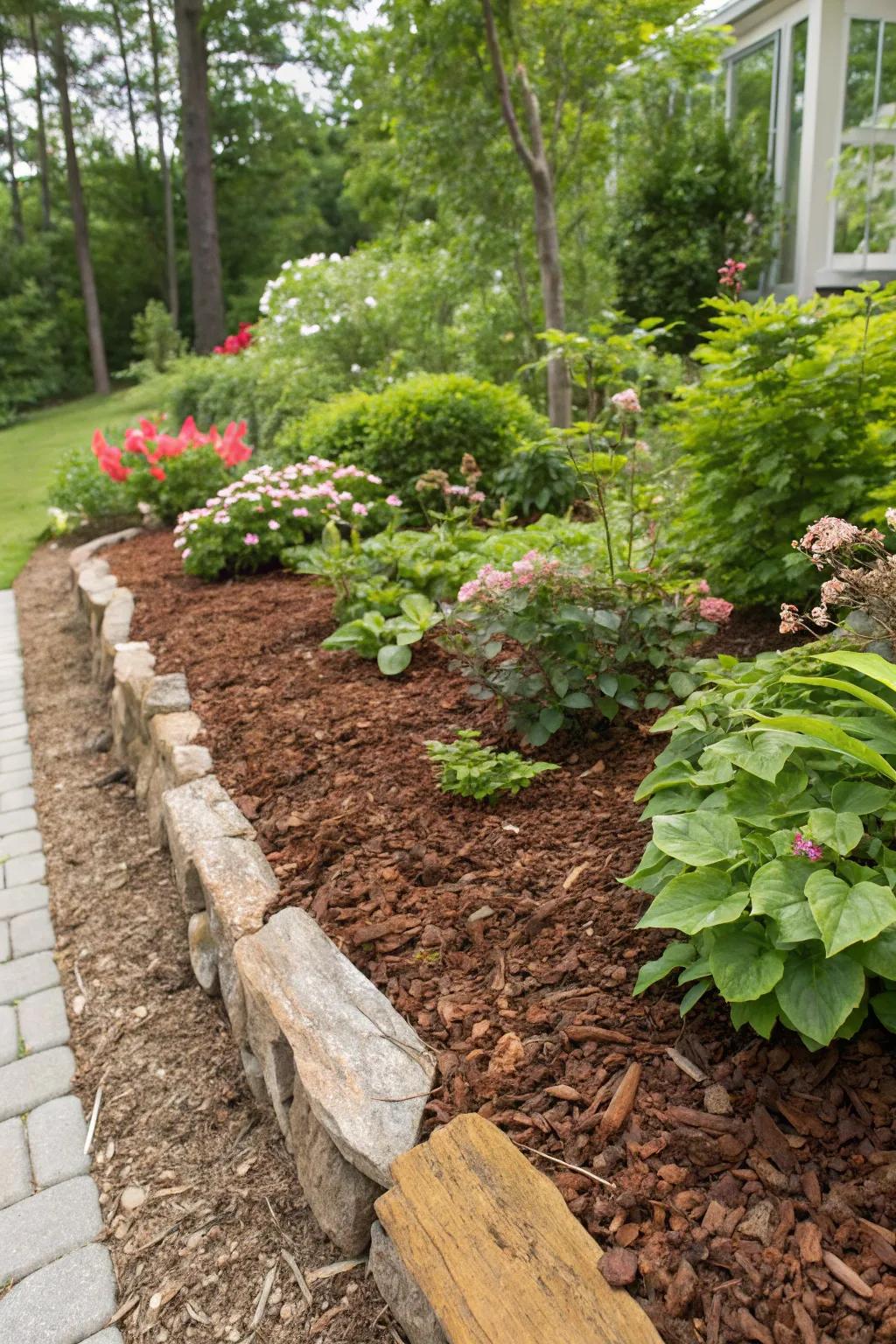
Use bark mulch to cover bare soil and enrich the earth as it decomposes. It’s my go-to for keeping plants happy and soil healthy.
A few choices to try:
- Organic Bark Mulch: Enhance your garden’s health and aesthetics with organic mulch. Improve moisture retention today.
- Mulch Spreading Rake: Effortlessly distribute mulch with a durable spreading rake. Keep your landscape pristine and organized.
- Garden Edge Border: Define your garden with stylish edging. Create clear borders between mulch and lawn.
6. Natural Stone Pathway
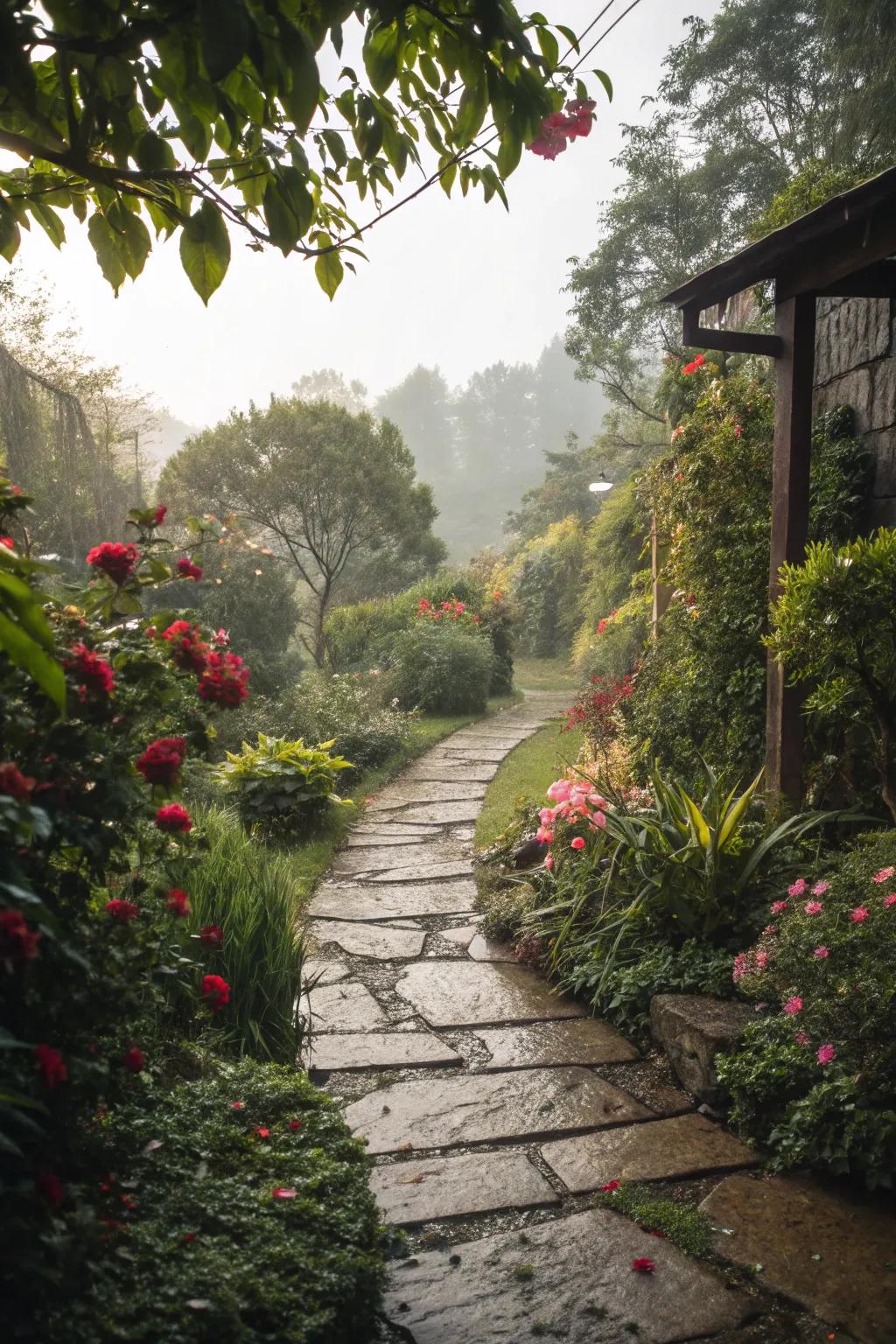
Incorporate a natural stone pathway for a classic look that blends seamlessly with the landscape. I adore how the stones look after a rain – they really pop!
May just do the trick:
- Outdoor Natural Stone Pavers: Enhance your garden’s charm with these stone pavers that blend beautifully with any landscape.
- Garden Edging Stones: Define your pathway with durable edging stones, perfect for creating a neat and classic look.
- Weatherproof Landscape Lighting: Illuminate your stone pathway with stylish, weatherproof lights for a serene evening ambiance.
7. Herbaceous Lawn Alternatives
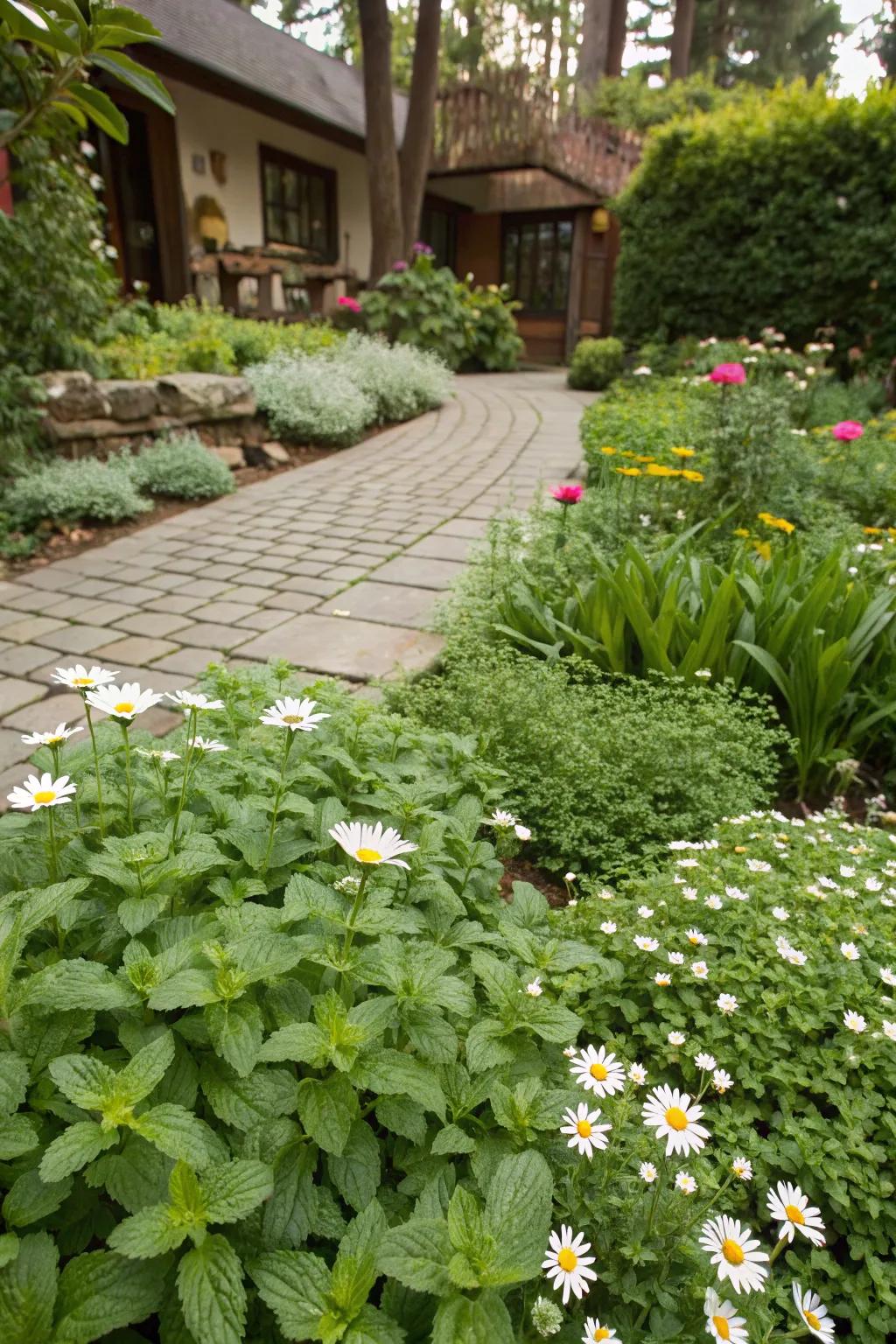
Consider herbaceous ground covers like mint or chamomile for a scented lawn alternative. Every step releases a delightful fragrance – it’s simply magical!
Give these a look:
- Chamomile Lawn Seeds: Transform your lawn with fragrant chamomile, adding beauty and aroma to every step.
- Mint Ground Cover Plants: Create a lush, aromatic ground cover with mint for a refreshing sensory experience.
- Organic All-Purpose Plant Fertilizer: Boost your herbaceous lawn’s growth with a nourishing, all-purpose organic fertilizer.
8. Stone Mosaic Patio

Create a stunning focal point with a stone mosaic patio. Using different colored stones, you can craft intricate patterns – it’s like art for your outdoor floor!
Products that could assist:
- Stone Mosaic Tile Kits: Transform your patio with these vibrant mosaic tile kits, blending creativity with durability.
- Outdoor Patio Sealant: Protect your mosaic masterpiece with an easy-to-apply, weather-resistant sealant for long-lasting beauty.
- Tile Adhesive for Outdoor Use: Ensure strong bonding of your mosaic tiles with this reliable outdoor tile adhesive.
9. Evergreen Artificial Grass
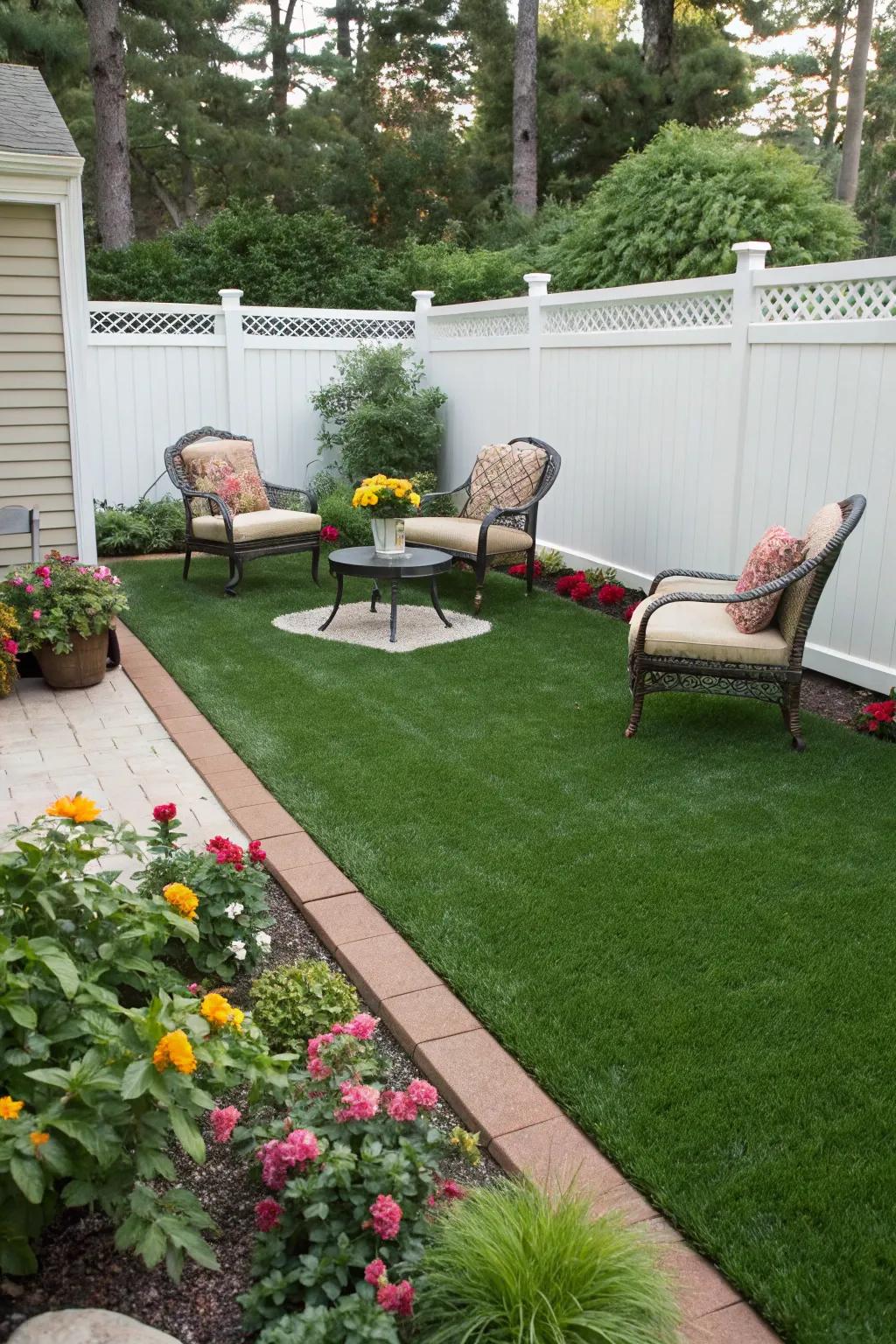
For a maintenance-free green space, consider artificial grass. It’s perfect for areas where natural grass struggles, and it stays lush year-round without the hassle of mowing.
Some ideas to consider:
- Artificial Grass Turf Roll: Enhance your garden with realistic, durable grass that remains vibrant and mess-free all year.
- Outdoor Patio Furniture Set: Create a cozy outdoor space with stylish, comfortable seating perfect for any artificial grass area.
- Decorative Garden Border Edging: Define your artificial lawn elegantly with weather-resistant, easy-to-install garden borders.
10. Sculptural Cacti Arrangement
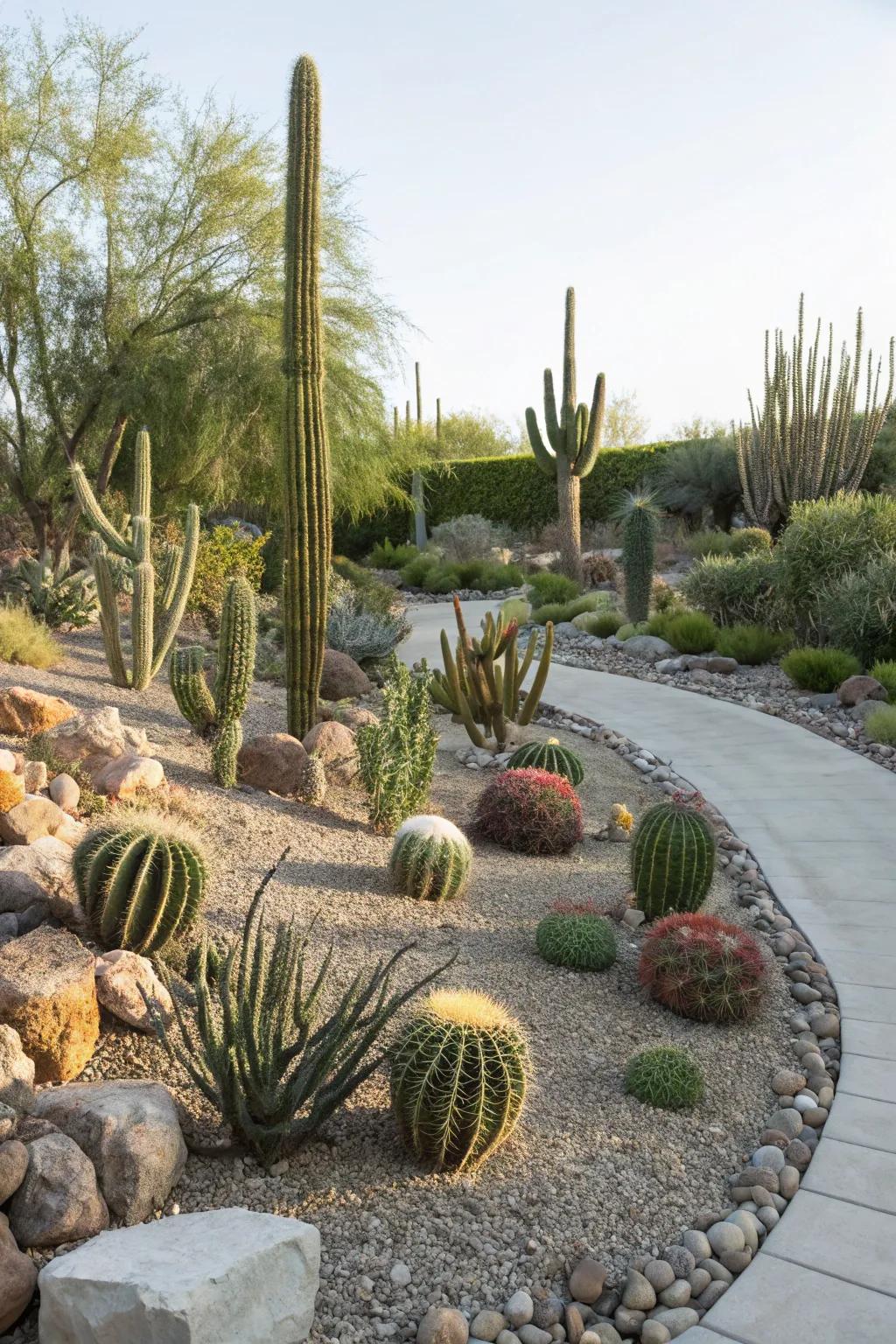
For a bold statement, design a sculptural cacti arrangement. These hardy plants offer dramatic shapes and require minimal water – perfect for dry climates!
These products might help:
- Cactus and Succulent Soil Mix: Boost plant health with a nutrient-rich cactus soil mix, perfect for promoting growth in dry climates.
- Decorative Stone Pebbles: Enhance your garden’s aesthetics with decorative pebbles, adding texture and visual interest effectively.
- Drip Irrigation Kit: Maintain optimal moisture with a drip irrigation kit, ideal for efficient water use in arid areas.
11. Perennial Ground Covers
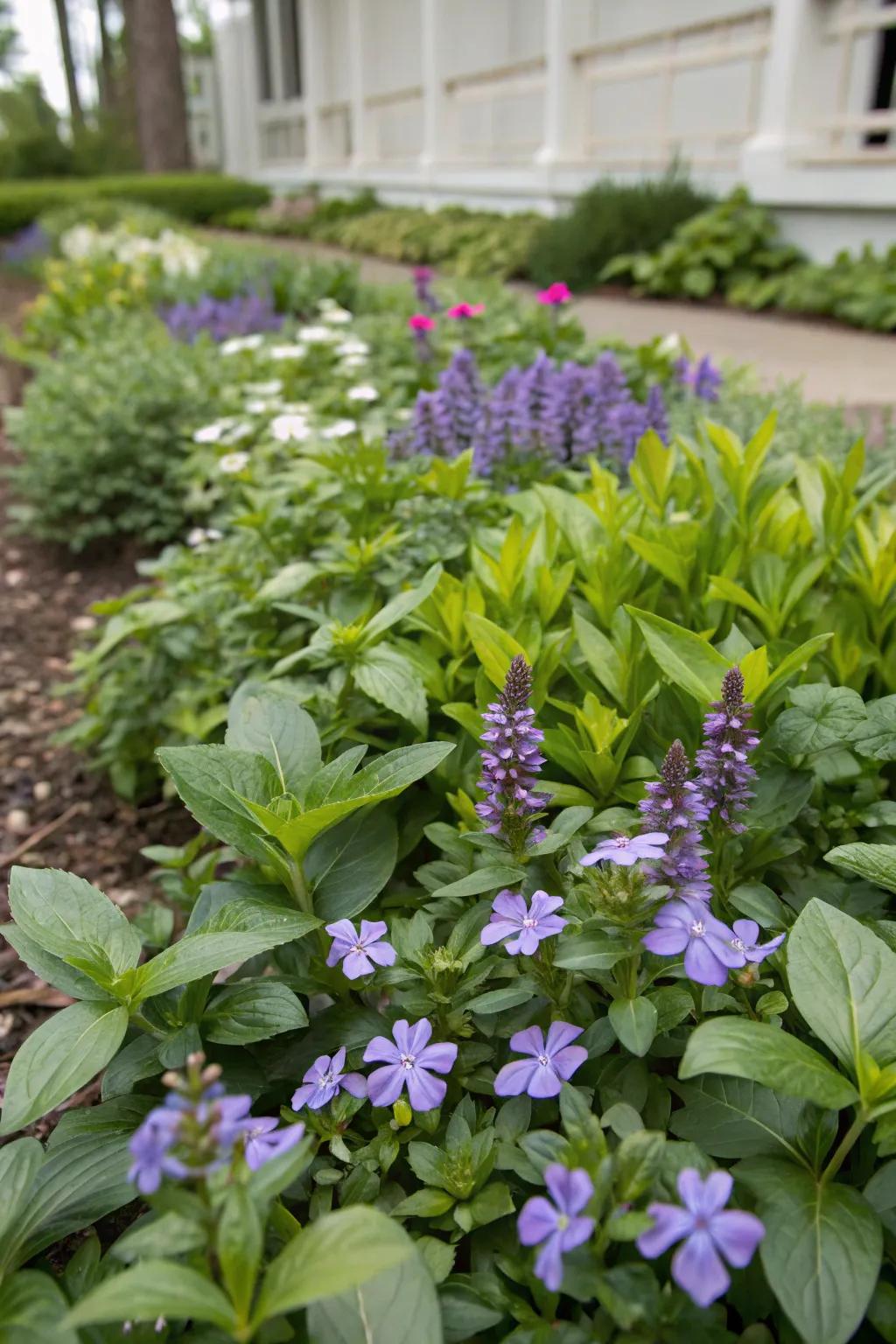
Invest in perennial ground covers like vinca or ajuga that return year after year. They’re a long-term solution that fills your garden with color.
Some handy options:
- Perennial Vinca Minor – Live Plants: Enhance your garden’s appeal with easy-to-grow Vinca Minor for lasting lush greenery.
- Ajuga Reptans – Bugleweed Starter Plants: Transform your landscape with vibrant and hardy Ajuga Reptans for year-round beauty.
- Perennial Ground Cover Seeds Mix: Create a colorful ground cover instantly with an assorted perennial seed mix for any garden.
12. Leafy Fern Beds
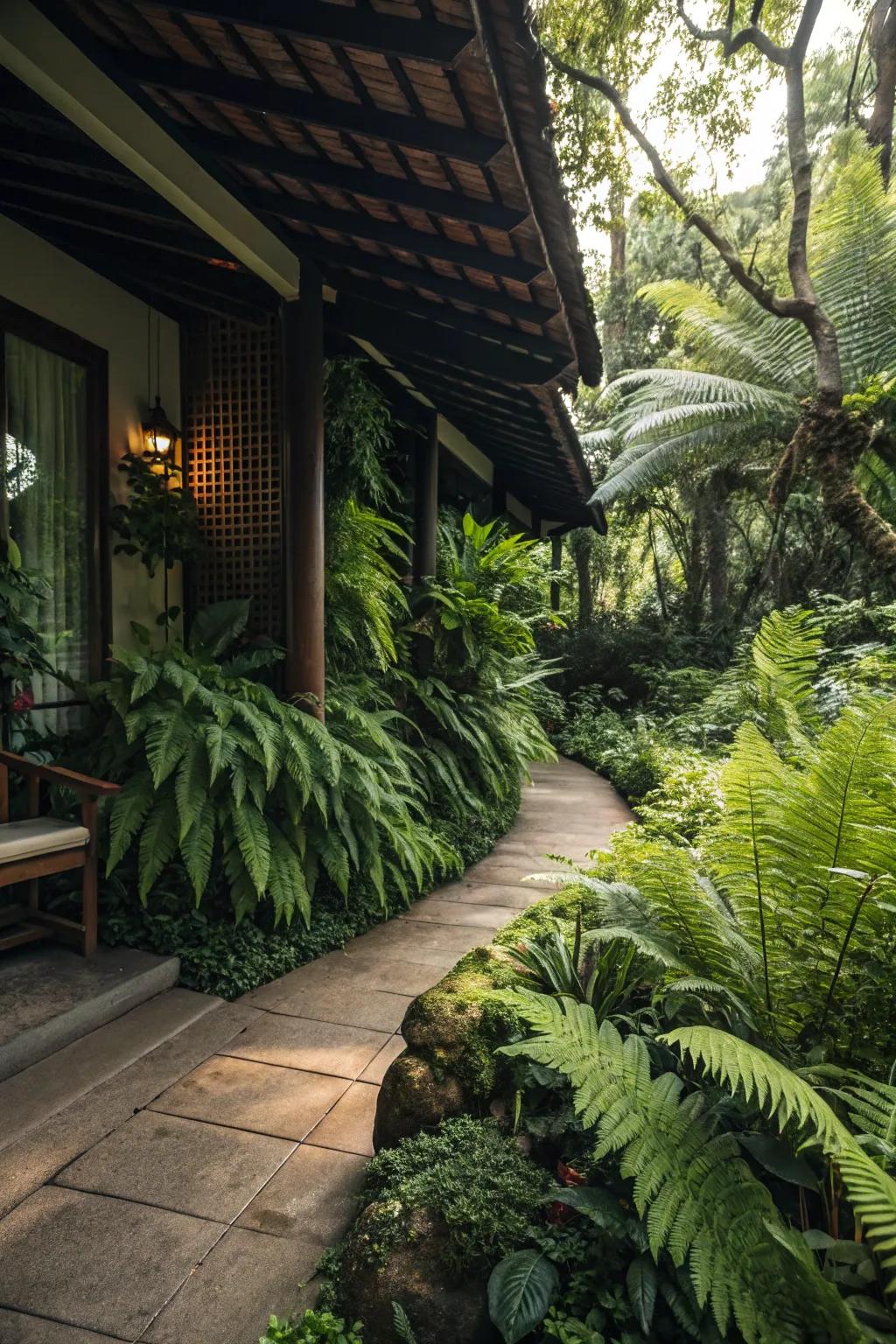
Create lush fern beds in shaded areas for a tropical feel. They’re easy to care for and add a touch of verdant luxury.
Possibly handy products:
- Shade-tolerant fern seeds: Grow lush fern beds effortlessly with these easy-to-plant, shade-loving fern seeds.
- Organic plant fertilizer: Nourish your ferns with this organic fertilizer for vibrant, healthy growth all year round.
- Watering can with sprinkler head: Easily water your fern beds with this convenient watering can featuring a sprinkler head.
13. Living Carpet of Moss
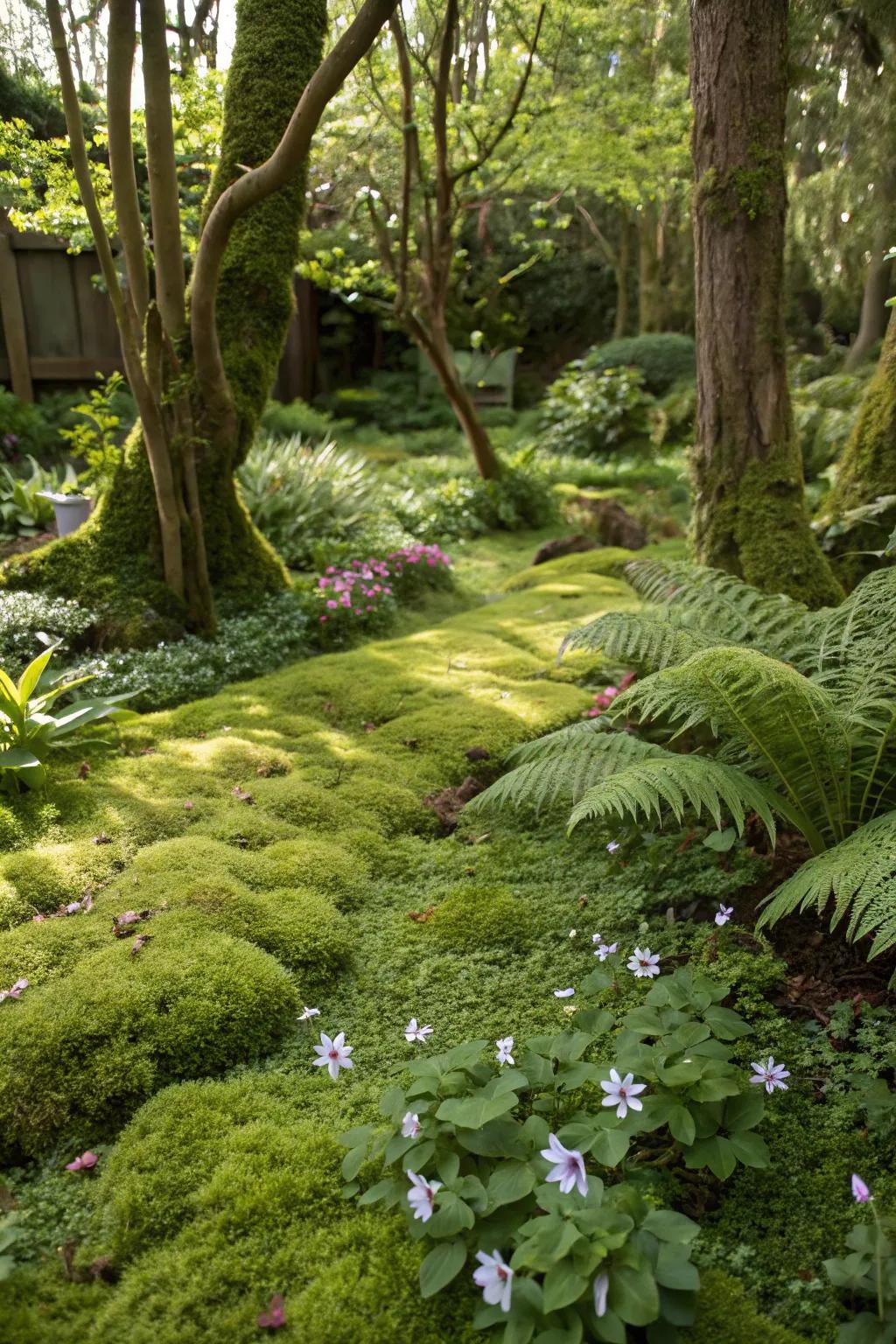
Add a touch of enchantment with a moss carpet that feels like a forest floor. I’ve found that moss thrives in shady spots and adds a soft, natural touch that instantly elevates the ambiance.
These products might be useful:
- Shade-Loving Moss Kit: Transform shady areas with this moss kit for a lush, enchanting forest floor effect.
- Moss Starter Pack: Kickstart your moss garden with this starter pack, perfect for creating a natural ambiance.
- Moss Planting Mat: Effortlessly lay a captivating moss carpet with this convenient planting mat.
14. Colorful Ground Cover Plants
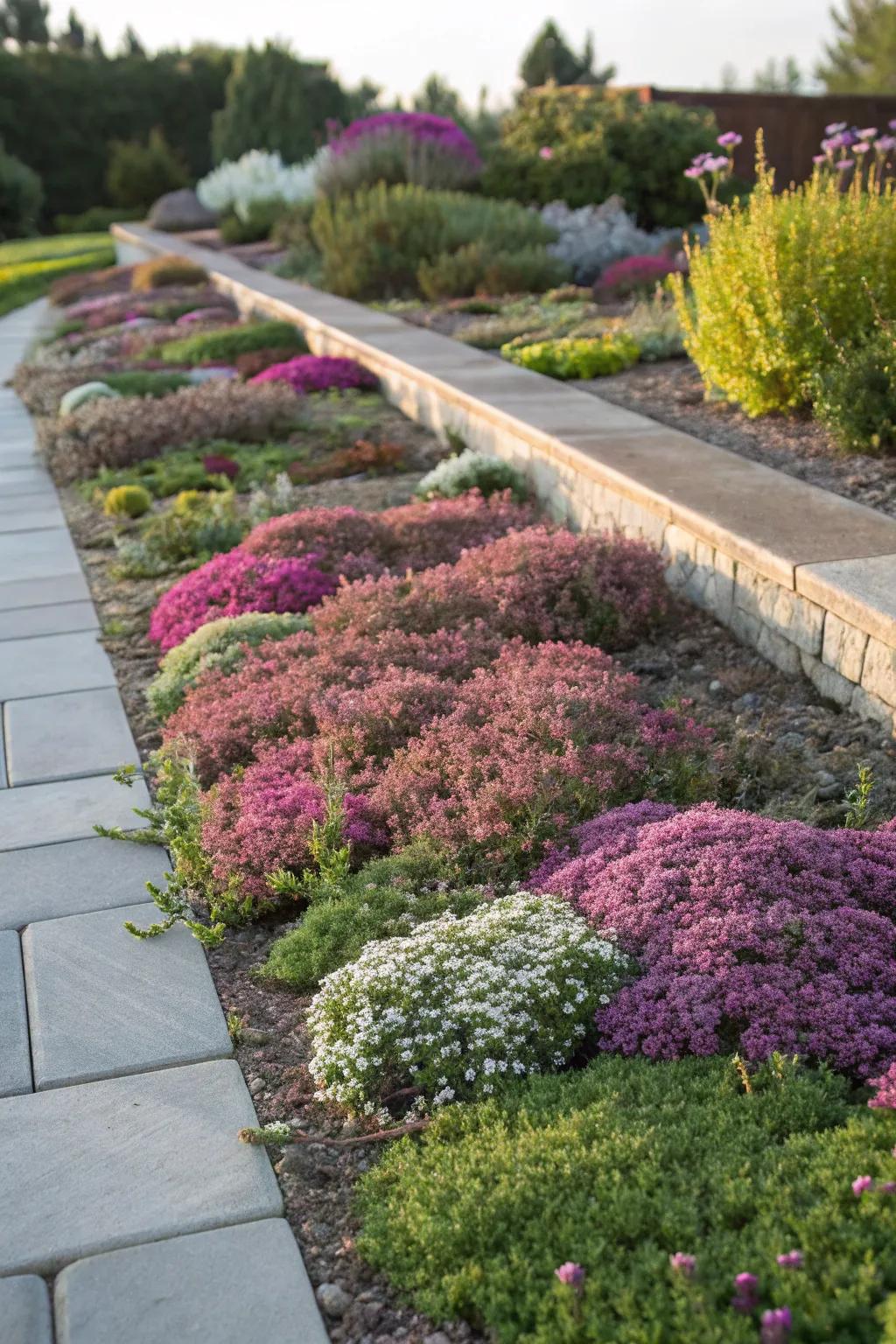
Bring your garden to life with vibrant ground cover plants like creeping thyme or sedum. These low-growing beauties not only add color but also require minimal maintenance – a win-win in my book!
Consider these options:
- Creeping Thyme Seeds Pack: Add a pop of color to your garden effortlessly with easy-to-grow creeping thyme seeds.
- Sedum Rooted Cuttings: Transform your outdoor space with versatile sedum cuttings for vibrant, low-maintenance ground cover.
- Ground Cover Plant Fertilizer: Enhance growth and color in your ground covers with specially formulated plant fertilizer.
15. Shade-Loving Hostas
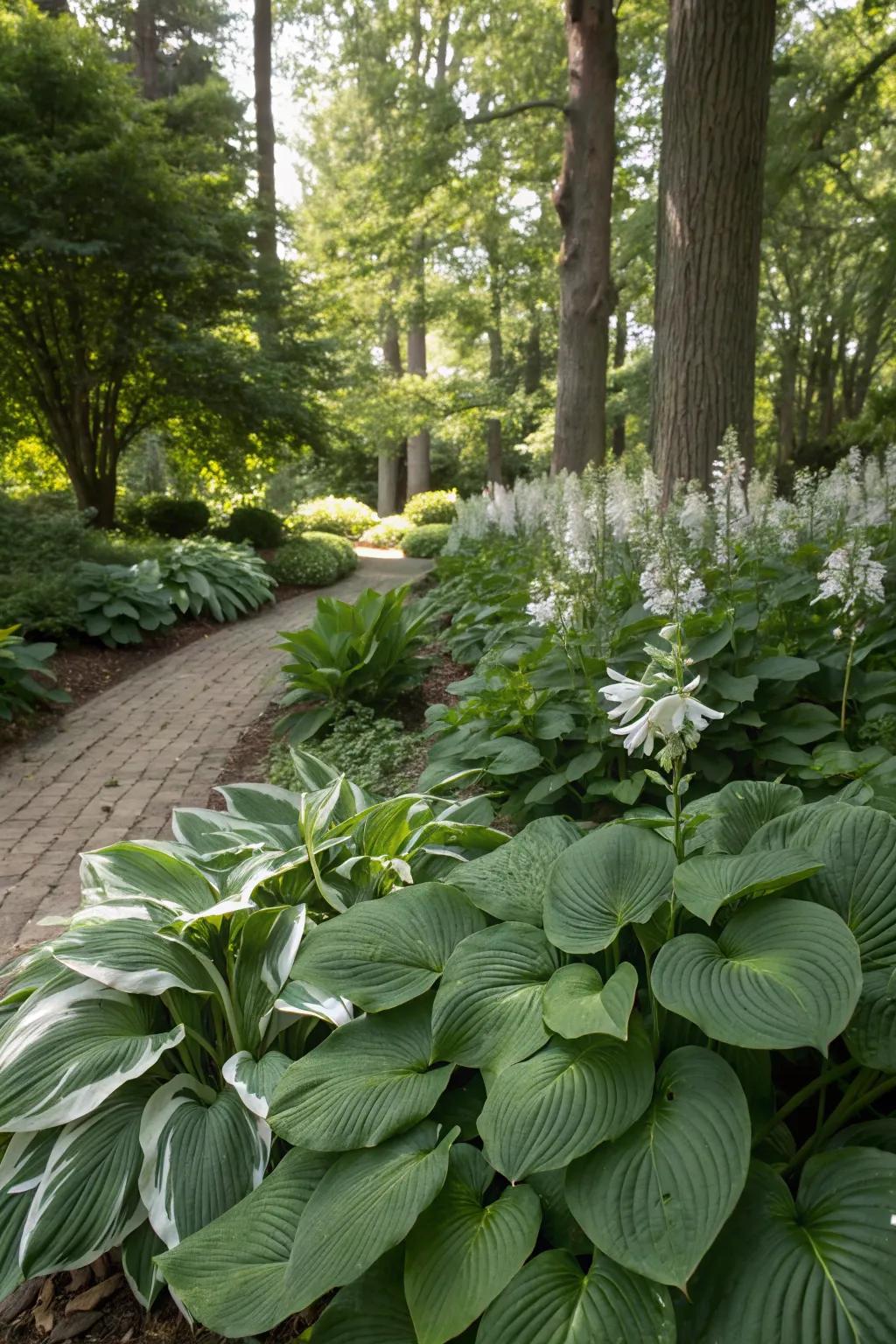
Fill shady spots with hostas, which offer lush foliage and lovely flowers. They’re a staple in my garden for their easy care and beauty.
A few helpful options:
- Hosta Plant Collection: Enhance shady garden spots with diverse hosta varieties, offering beauty and minimal maintenance.
- Shade-Tolerant Fertilizer: Boost the growth of your hostas with a shade-friendly, nutrient-rich fertilizer for lush foliage.
- Mulch for Shade Gardens: Keep your hostas healthy and soil moist with mulch designed for shady garden areas.
16. Succulent Carpet
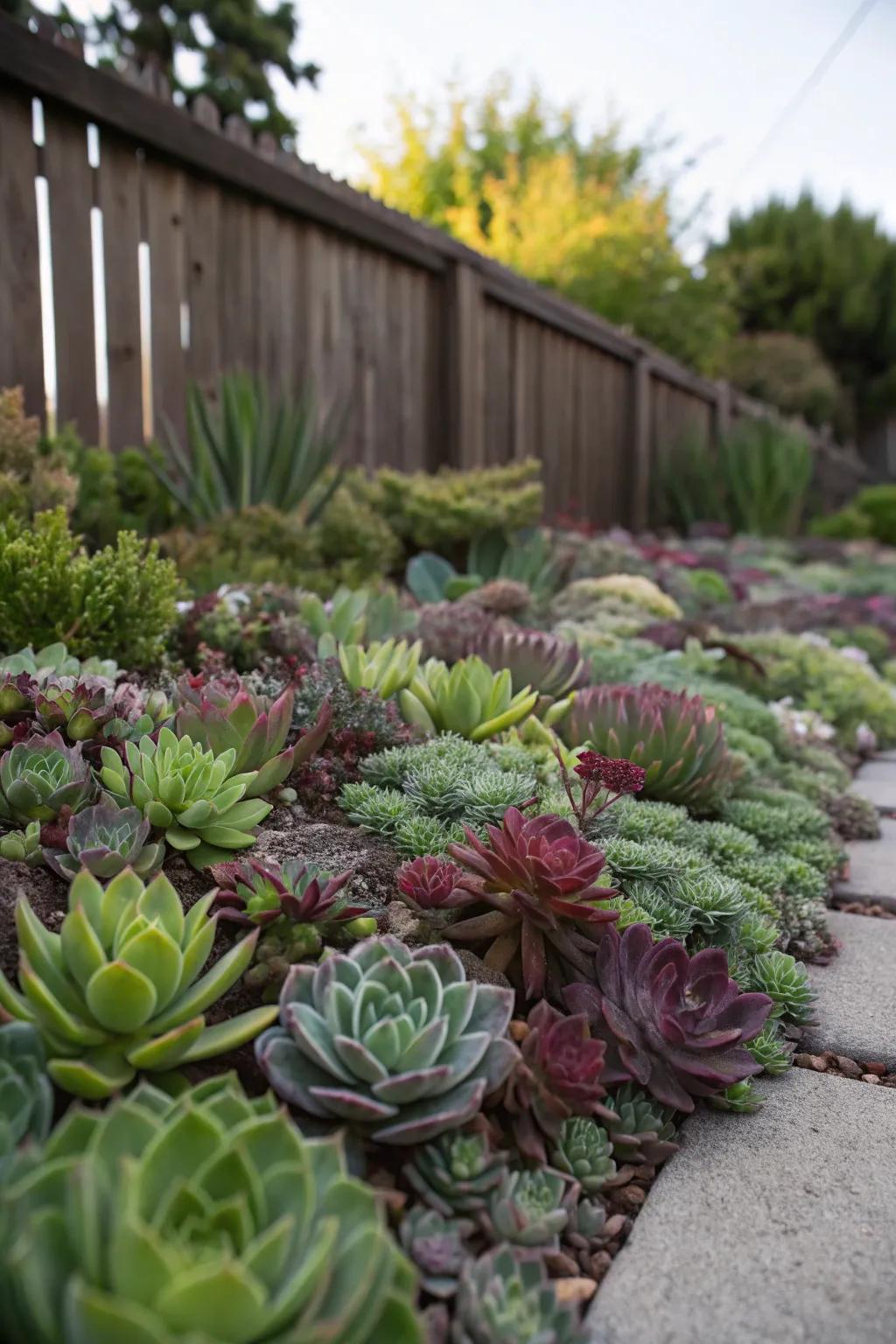
For a modern twist, try a succulent carpet. These hardy plants create a unique texture that’s both eye-catching and low-maintenance.
Maybe worth checking out:
- Assorted Succulent Plant Pack: Curate your succulent carpet effortlessly with this assorted plant pack. Perfect for beginners and experts.
- Cactus Soil Mix: Enhance succulent growth with this special cactus soil mix, designed for optimal drainage.
- Decorative Pebbles for Succulents: Add an elegant finish to your succulent carpet with these decorative garden pebbles.
17. Rustic Wood Chips
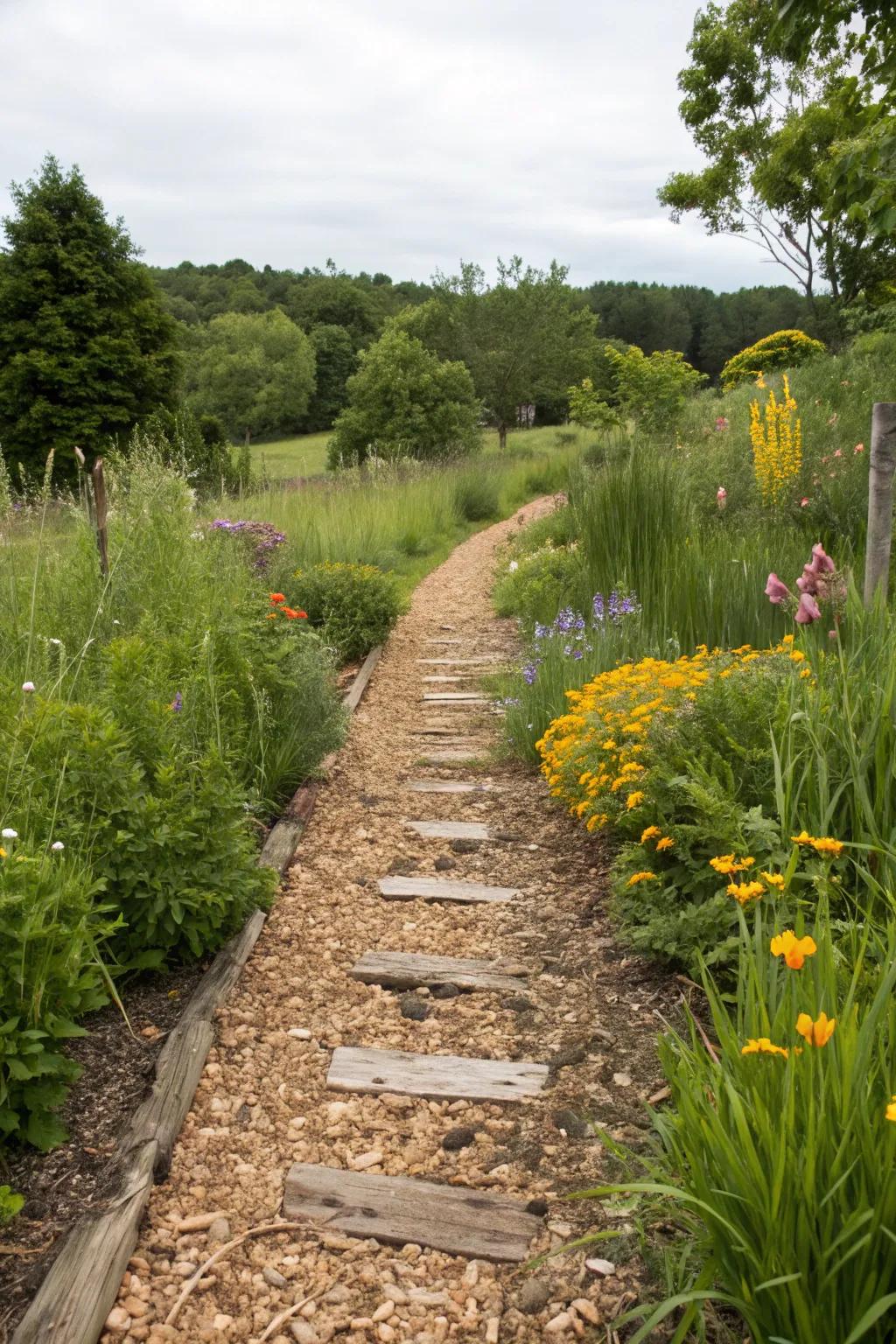
Enhance your garden’s rustic appeal with wood chips. They’re not only eco-friendly but also help retain moisture and suppress weeds – a gardener’s best friend!
A few relevant products:
- Natural Wood Chips for Mulching: Enhance garden appeal and moisture retention with eco-friendly natural wood chips.
- Garden Pathway Stepping Stones: Create charming pathways with durable stepping stones, perfect for rustic garden landscapes.
- Landscape Fabric for Weed Control: Prevent weed growth effectively and maintain garden aesthetics with easy-to-use landscape fabric.
18. Flowering Ground Covers

Opt for flowering ground covers like alyssum or phlox to add a pop of color and fragrance. They’re perfect for filling in gaps between stepping stones or garden borders.
Possibly helpful picks:
- Alyssum Flower Seeds: Plant alyssum seeds to create vibrant, fragrant patches between your stepping stones and garden borders.
- Phlox Ground Cover Plants: Enhance your garden with phlox ground covers for stunning color transitions and delightful scents.
- Garden Stepping Stones: Choose decorative stepping stones to artistically connect colorful flower patches in your landscape.
19. Sand and Seashell Mix

For a coastal vibe, try a sand and seashell mix. It’s perfect for sunny spots and adds a beachy feel to your landscape.
You might like:
- Decorative Beach Sand: Enhance your coastal vibe with high-quality decorative beach sand for a natural look.
- Natural Seashell Assortment: Add a beachy feel with beautifully assorted natural seashells for versatile decoration.
- Coastal Landscaping Border: Define your landscape with a rustic coastal border for an authentic beachside aesthetic.
20. Clover Lawn for Luck
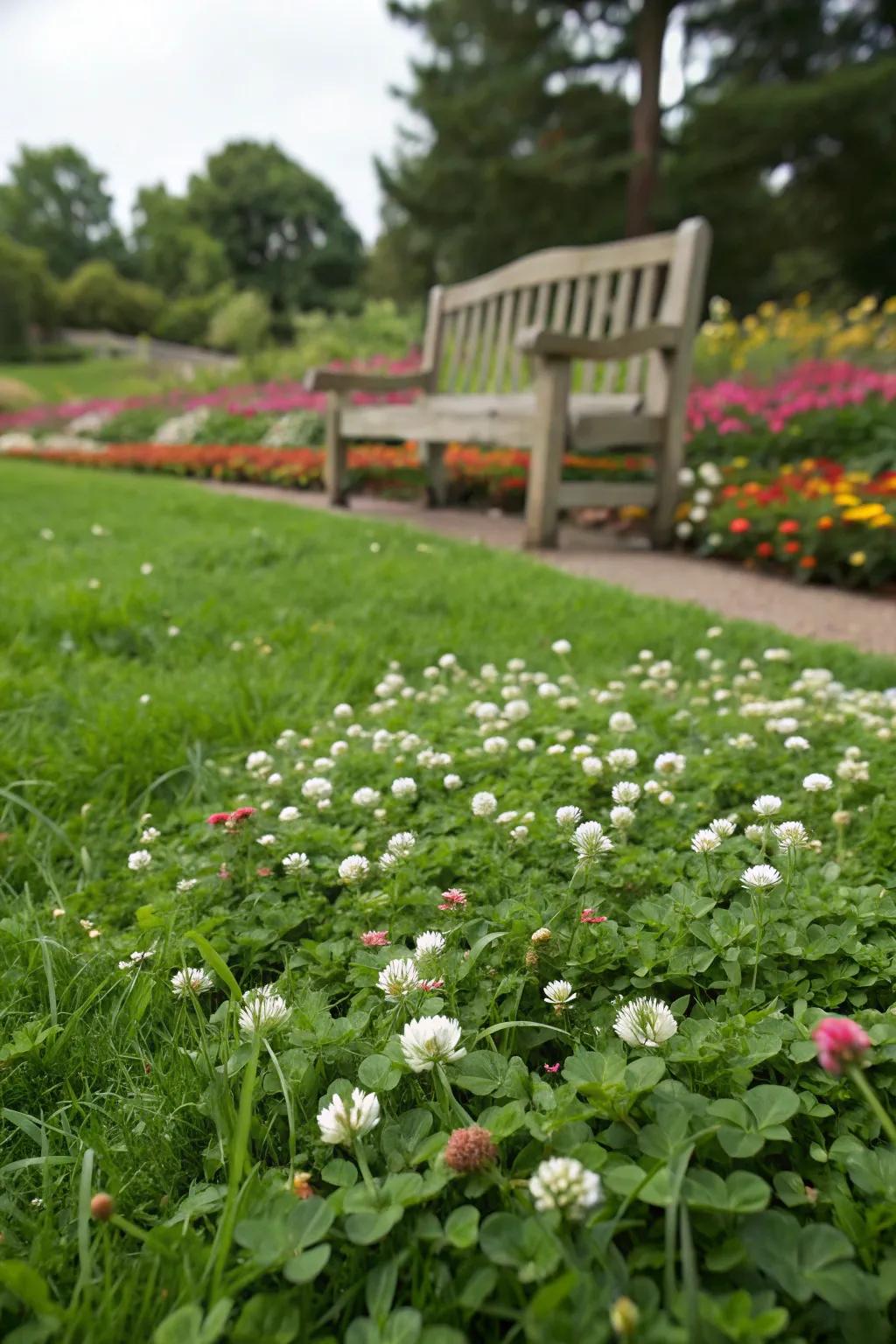
Swap traditional grass for a clover lawn. It’s drought-resistant, feels soft underfoot, and brings a touch of luck – plus, bees love it!
Might be a good match:
- Clover Seed: Plant dense clover to create a vibrant, drought-resistant lawn that bees will adore.
- Lawn Fertilizer: Enhance growth and ensure your clover lawn stays lush and green throughout the season.
- Bee House: Invite beneficial pollinators to your garden with a charming bee house for a thriving ecosystem.
